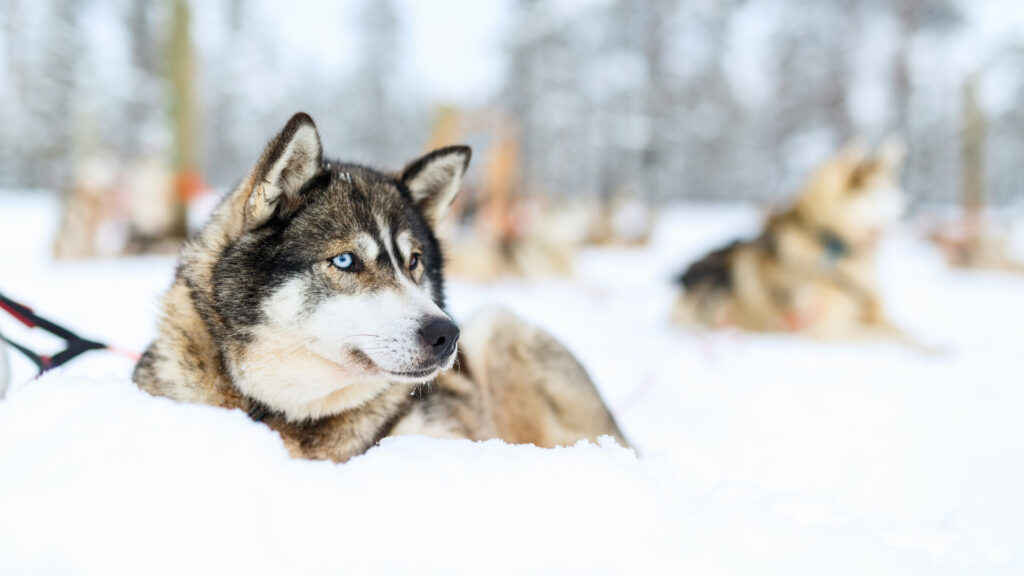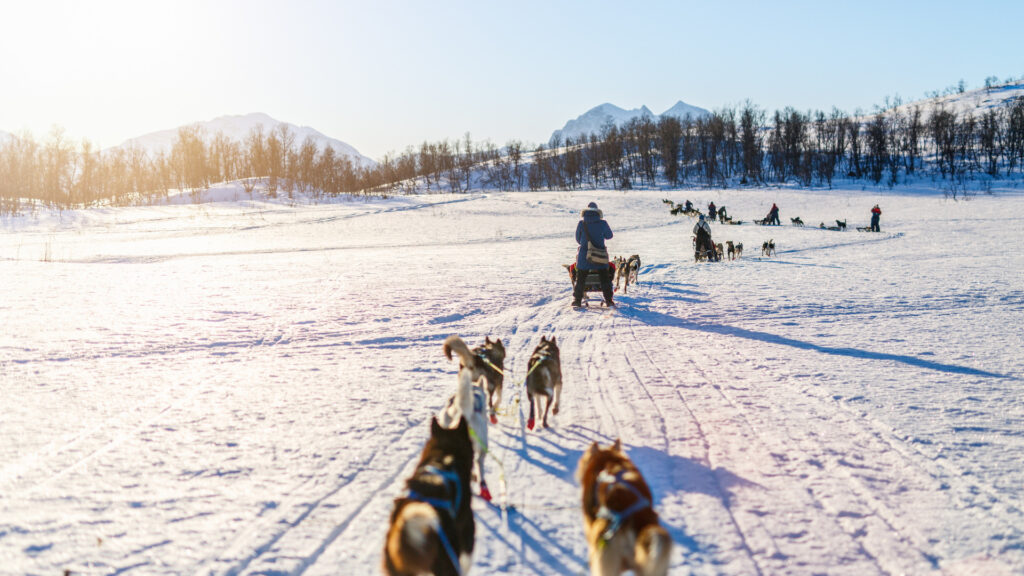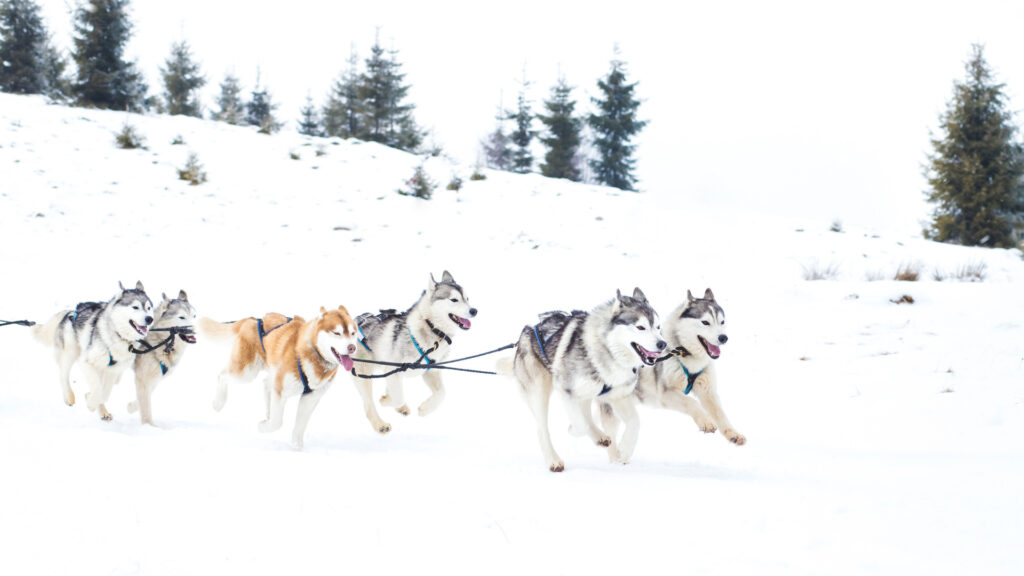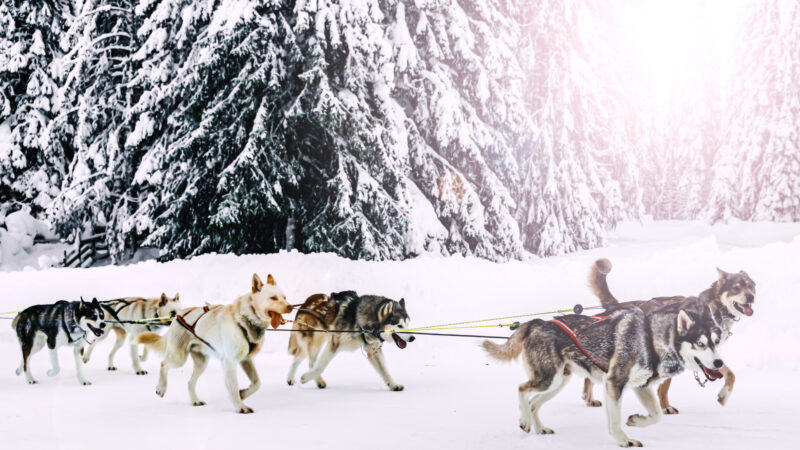Table of Contents Show
There are endurance races, and then there’s the Iditarod. While many have heard of this nearly impossible challenge, they don’t know many details about it. So, what exactly is the Iditarod?
It’s a race that’s so incredibly challenging that it deserves to be in a class of its own. It’s a tradition that’s become deeply ingrained in Alaskan culture.
Today, we’re talking about the Iditarod and how humans and dogs can accomplish some seemingly impossible feats. Hitch up the sled dogs, grab your mittens, and let’s get started!
What Is the Iditarod?
The Iditarod is an Alaskan endurance test often called the “Last Great Race on Earth.” Competitors, known as mushers, partner with 12 to 16 trained, dedicated, and powerful sled dogs.
Generally, Alaskan Huskies are the breed of choice because of their endurance, strength, and ability to handle extreme conditions.
Over the course of eight to 15 days, the teams not only compete against each other but also the elements. They often experience extreme temperatures, blizzards, and treacherous ice.
Additionally, they must endure long periods of solitude, with their only companion being their pack of canines.
History of the Iditarod Race
Sled dogs have played a significant role in Alaskan culture for centuries. The Iditarod commemorates the 1925 serum run when diphtheria threatened the remote Alaskan town of Nome.
Leonhard Seppala and his lead dog, Togo, saved many lives by making an incredible 674-mile adventure in only a few days.
Dorothy Page, a local historian, proposed the idea in 1967, and it became a reality on March 3, 1973. The first Iditarod featured 34 teams attempting to travel from Anchorage to Nome, a more than 1,000-mile adventure. A majority of the trail mirrors the serum run from Nenana to Nome.
It has grown in popularity as it has received worldwide recognition. It has been the subject of multiple films and books. While growing, it has also evolved to incorporate checkpoints, technology, and other important safety features. However, despite these changes, it remains a grueling endurance test.

How Many Miles Is the Iditarod Race?
The race uses two routes, both of which are just under 1,000 miles. However, officials state the official distance as 1,049 miles. The 49 represents Alaska’s status as the 49th state admitted as a part of the United States of America.
As mentioned, completing this iconic race takes eight to 15 days. It’s certainly not for the faint of heart or novice teams. While some compete for first place, finishing this challenge is a victory.
What Makes the Iditarod Challenging?
The Iditarod is one of the most challenging endurance races in the world. What makes it so difficult? Here are several of the challenges the teams face while making the journey.
Extreme Weather Conditions
The Iditarod takes place on the first Saturday of March every year, which means it’s the heart of winter in Alaska. Frigid temperatures, blizzards, and high winds are the norm throughout the race.
Temperatures can drop below zero, and the harsh winds can worsen conditions. Frostbite and hypothermia can quickly set in for anyone unprepared.
The weather can also make traversing the remote areas very difficult. Racers may struggle with navigating and progressing. Icy trails can be challenging for the sleds and the dogs to maintain traction.
Keep in Mind: Are you considering going on an Alaska Railroad Tour? Before you do, click to see if they’re worth it!
Long Distance
Driving 1,000 miles in an automobile is no easy task, but doing it on a dog sled? That’s a whole different level of insanity. Frozen rivers, mountain ranges, and remote wilderness don’t do teams any favors. The mileage and conditions make it one of the world’s longest and most grueling sled dog races.

Physical and Mental Endurance
This race tests competitors in many ways, but especially physically and mentally. It takes dedication and enormous preparation to have any hope of finishing. Competitors must be physically and mentally tough.
After a day or two of grinding it out, the luster fades. Recreating these mind games to prepare for it can be challenging. It can take years of experience to have the physical and mental endurance to finish this sort of challenge.
Keep in Mind: Unfortunately, not all national parks are pet friendly. If you’re looking for Dog-Friendly National Parks, we’ve got you covered with this list!
Sleep Deprivation
Covering the 1,000 miles of the Iditarod requires mushers to operate on little sleep. If you thought driving drowsy was dangerous, try mushing drowsy. One musher found out the hard way when he dozed off, and his team finished without him.
If you’ve ever tried to do anything while tired, it’s challenging. A lack of sleep causes you not to think clearly, which can make it difficult to make important decisions. While no one has died during the Iditarod, it’s a very real possibility.
Self-Reliance
Competitors spend the majority of their time in extremely remote sections of Alaska. Immediate assistance and support are far away, so they must be entirely self-reliant. Participants must use their skills, knowledge, and preparedness to withstand whatever Alaska throws at them.
Some important skills mushers must possess include wilderness survival, navigation, and first aid for themselves and their sled dogs. If any event will test their ability to be self-reliant, it’s the Iditarod.

The Iditarod Is the Ultimate Alaskan Endurance Test
Considering we’ve mentioned that this is one of the most challenging races in the world, we don’t recommend trying it. While we encourage you to leave the mushing to the experts, you can still cheer them on. Stream coverage online or, better yet, plan a trip to experience the iconic race in person.
Have you ever traveled to Alaska to watch the Iditarod?






